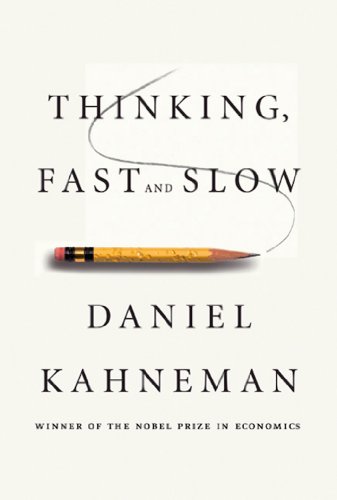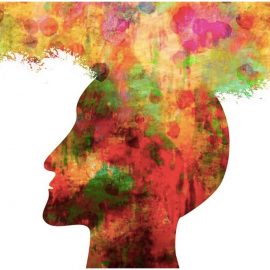

This article is an excerpt from the Shortform summary of "Thinking, Fast and Slow" by Daniel Kahneman. Shortform has the world's best summaries of books you should be reading.
Like this article? Sign up for a free trial here .
What is the “What You See is All There Is (WYSIATI)” phenomenon? How does it work? Why does WYSIATI lead to bad decisions?
What You See is All There Is (WYSIATI) is a cognitive bias described by Daniel Kahneman in Thinking, Fast and Slow. WYSIATI says that when presented with evidence, especially those that confirm your mental model, you do not question what evidence might be missing.
Learn how the “What You See is All There Is” phenomenon affects your decision making, and learn how to overcome it.
What You See is All There Is: WYSIATI
System 1 (fast, intuitive thinking) seeks to build the most coherent story it can – it does not stop to examine the quality and the quantity of information. So it looks at what is in front of it. This results in the “What You See is All There Is” bias.
In an experiment, three groups were given background to a legal case. Then one group was given just the plaintiff’s argument, another the defendant’s argument, and the last both arguments.
Those given only one side gave a more skewed judgment, and were more confident of their judgments than those given both sides, even though they were fully aware of the setup. This demonstrates the “What You See is All There Is” phenomenon.
Why Does “What You See is All There Is” (WYSIATI) Happen?
We often fail to account for critical evidence that is missing. This is the essence of the “What You See is All There Is” bias.
Putting it all together, we are most vulnerable to biases when:
- System 1 forms a narrative that conveniently connects the dots and doesn’t express surprise.
- Because of the cognitive ease by System 1, System 2 is not invoked to question the data. It merely accepts the conclusions of System 1.
In day-to-day life, decisions made based on the “What You See is All There Is” phenomenon are acceptable if the conclusions are likely to be correct, the costs of a mistake are acceptable, and if the jump saves time and effort. You don’t question whether to brush your teeth each day, for example.
In contrast, this shortcut in thinking is risky when the stakes are high and there’s no time to collect more information, like when serving on a jury, deciding which job applicant to hire, or how to behave in a weather emergency.
WYSIATI and Decision Making
How is the “What You See is All There Is” bias tied to decision making?
Because of a narrow frame, System 1 doesn’t know what information it’s missing. It doesn’t consider the global set of possibilities and make decisions accordingly. This can lead to odd situations where you make one set of decisions when considering two cases individually, then a contradictory decision when you consider them jointly.
Consider a nonprofit that reduces plastic in the ocean to avoid poisoning and killing baby dolphins. How much are you willing to donate to support the cause?
Now consider the discovery that farmers are at significantly higher risk of skin cancer because of the time they spend outdoors. How much are you willing to donate to a nonprofit that reduces cancer for at-risk groups?
You are likely more willing to pay a higher amount for the dolphins than the farmers. In isolation, each scenario engages a different “account” and intensity of feeling. Saving baby dolphins employs the “save the animals” account, and baby dolphins is high on the scale (relative to saving wasps). You intensity match the high emotion you feel to an amount you’re willing to pay.
In contrast, the farmer skin cancer example evokes a “human public health” account, in which farmer skin cancer is likely not as high a priority as baby dolphins is on the saving animals account. Emotion is lower on this account, so the donation is lower.
Now consider the two examples together. You have the option of donating to a dolphin-saving non-profit, or a human cancer-reducing non-profit. Which one are you more willing to pay for? Likely you now realize that humans are more important than animals, and you recalibrate your donations so the second amount exceeds the first.
Judgment and preferences are coherent within categories, but may be incoherent when comparing across categories.
And because of the “what you see is all there is” bias, alternative categories may not be available for you to consider. Much of life is a between-subjects trial – we only get exposed to one major event at a time, and we don’t think to compare across instances.
To challenge the “What You See is All There Is” (WYSIATI) bias, force yourself to ask: “what evidence am I missing? What evidence would make me change my mind?”
———End of Preview———

Like what you just read? Read the rest of the world's best summary of "Thinking, Fast and Slow" at Shortform . Learn the book's critical concepts in 20 minutes or less .
Here's what you'll find in our full Thinking, Fast and Slow summary :
- Why we get easily fooled when we're stressed and preoccupied
- Why we tend to overestimate the likelihood of good things happening (like the lottery)
- How to protect yourself from making bad decisions and from scam artists






WYSIATI, the abbreviation itself sounds like a magic spell and indeed it is, a magic spell on our minds. Appearances lie, so does less or irrelevant information. We are WYSIATIed with almost everything around us. Isn’t it? A stranger who just spoke rashly to us will cast a judgment in our mind. But will that character analysis yield results even close to true? Most probably not.